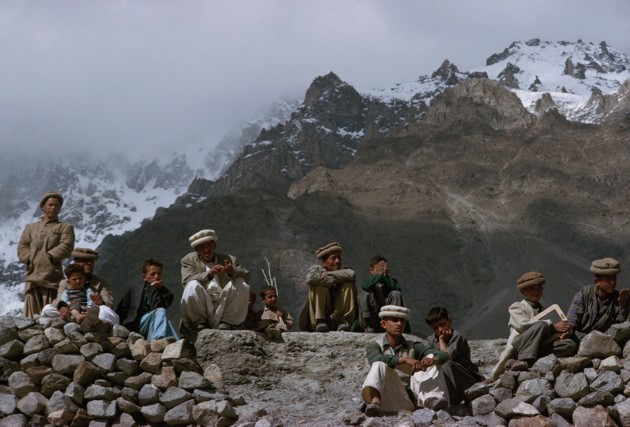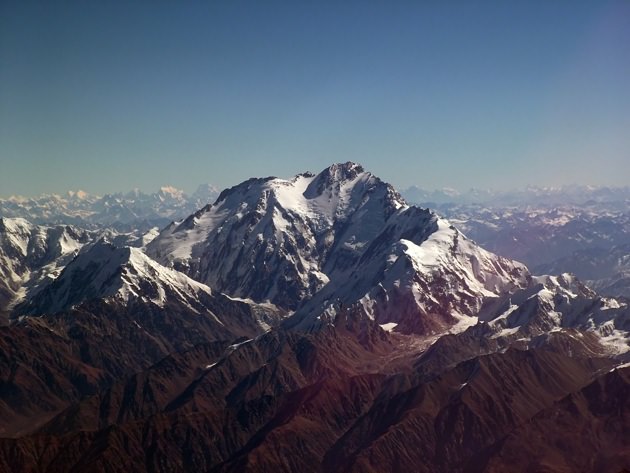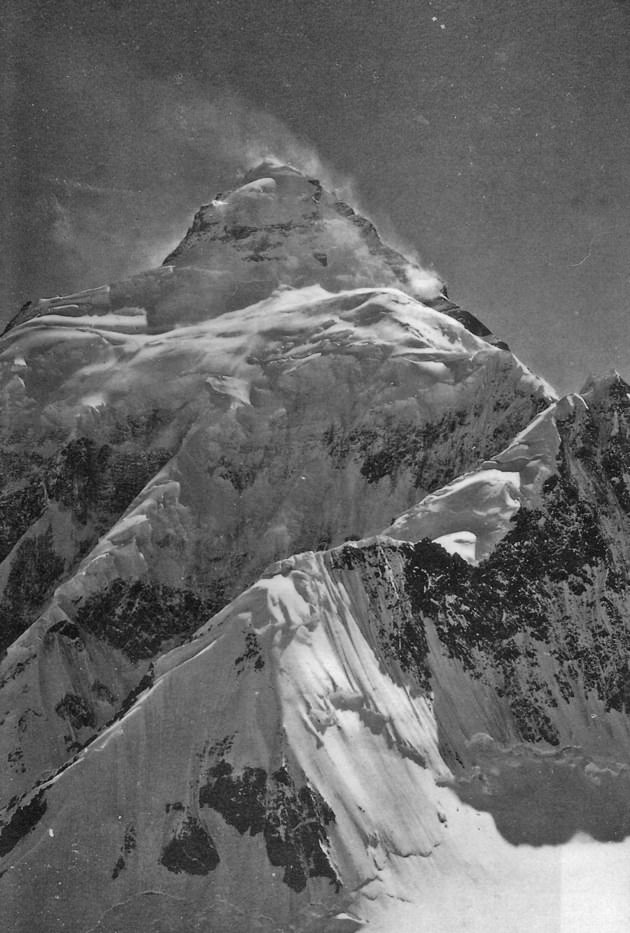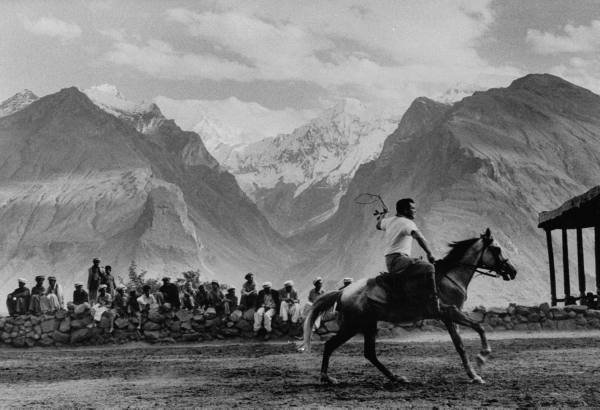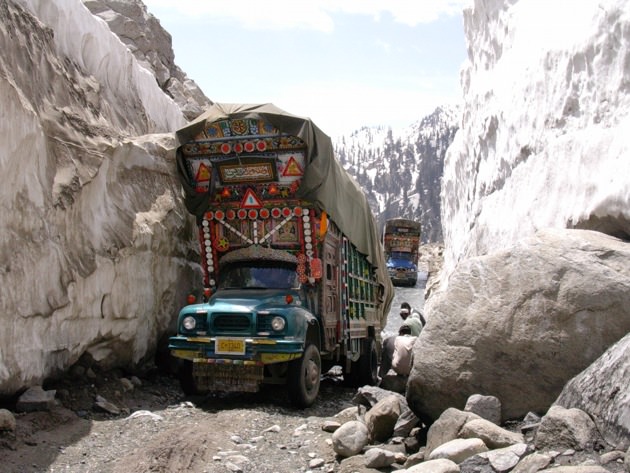I arrived in Pakistan in late September 1969, three weeks after setting out from Chamonix with my climbing friend Claude Jaccoux and his wife in a Land Rover Dormobile. We had driven across Turkey, Iran, and Afghanistan, and now I was supposed to take up a visiting professorship at the University of Islamabad. But there were unexpected developments.
The day after we arrived, I called Riazuddin, the head of the theoretical physics department. He had some surprising news to report. There had been riots in Pakistan against Ayub Khan, the second president of Pakistan. A new martial law government had been installed under Yahya Khan. The army was essentially running the country. Since university students had participated in the unrest, Khan had closed the University of Islamabad until November. There would be no classes and no one for me to teach. Riazuddin was very apologetic and suggested that I use the month to visit Pakistan. I did not tell him that seeing the mountains had been the object of the exercise in the first place. I then told the Jaccoux and we began serious planning.
The first thing we did was to study the map of the North-West Frontier Province. We decided that we would travel first to Skardu in the east, which is close to the disputed Kashmir boundary with India, but we would have to fly because the road situation was dicey to non-existent. Someone I met in the hotel had told me that that summer the Pakistani government, having gotten tired of the antics of the tribesmen in these so-called “Tribal Regions”—which included the murder of some tourists— had sent in the army to take control. This meant that visits to these places was supposed to now be safer. Then there was the matter of when the flights left ‘Pindi. These were very difficult mountain flights that required absolutely perfect visibility; to improve the chances, they left at five or six in the morning. When we got to the airport, we joined a small group of frontiersmen and an even smaller group of women dressed in burkas who were to be our fellow passengers.
It was the most beautiful mountain flight I have ever been on. At one point we flew close to Nanga Parbat, the western anchor of the Himalayan chain, which had long been on my list. From the air it looked very tranquil but many alpinists have been killed trying to climb it. Its height is 26,658 feet and the plane was flying at least 8,000 feet below the summit.
Skardu, the principal town of Baltistan, was a desolate place with a thin line of vegetation near the Indus. We were greeted by a representative of the airline who was very surprised to see us. Eventually we were driven by jeep to the government rest house. It was full with official people—just what they were doing in this remote region we would discover later. We slept in the tents we had brought with us.
The next day we hired a jeep and driver to take us north over some hair-raising roads to the town of Khaplu, where we spent the night. There was a river nearby and we hired a boatman to give us a scenic ride on a raft of wooden logs over an inflated goatskin. Before dinner we climbed as high as we could get, hoping to be able to see some of the great peaks of the Karakoram range. But K2, the greatest of these—and the elusive number two on my list—is very difficult to see and involves a serious trek which we had neither the time, permission, nor the equipment to carry out.
That was soon remedied on our spectacular flight to Gilgit, some 150 miles to the northwest of Skardu. The pilot invited us to come up to the cabin to better take in the view. At one point he asked us if we would like to see K2. We said very much and he took the plane up a thousand feet or so. Suddenly on the horizon there appeared an unbelievable black pyramid piercing the sky-the second highest mountain in the world. You could stand one Matterhorn on top of another and still not reach the summit. As we were looking, open-mouthed, a stewardess came back and said one of the passengers was fainting—the plane was not pressurized. The pilot lowered the altitude and the mountain vanished.
Gilgit was a former hill station set up by the British at the turn-of-the-century to counter Russian influence in India. Like Skardu, it was now part of Pakistani Kashmir. Indeed we were close to the disputed boundary, which had been the cause of a major conflict between India and Pakistan three years earlier. There was a substantial outpost of soldiers, and we learned that some of the officials we had seen earlier were military.
Advertisement
We also had a bit of luck. Jaccoux had met a young Pakistani living in Gilgit. He had come from a rich land-owning family in Sind but had broken with them over his liberal views. His wife, a doctor, was expected to practice purdah which would have meant that she could not work in medicine. So they had moved to Gilgit, she as a doctor and he as an entrepreneur who was attempting to create tourism for the area. He told Jaccoux that when we came to Gilgit we should accept his hospitality, which included a jeep and a driver.
We took advantage of this offer and drove north past the mountainous Hunza Valley on what was the nascent highway that would eventually lead from China to central Pakistan. For this reason we could not get permission to actually visit Hunza where, it had long been rumored that the people remained unnaturally youthful. The doctor wife of our host said that this was nonsense: their ruddy complexions had to do with exposure to the elements. The next day we returned to Gilgit for a polo match between the Gilgit Scouts and a team from a nearby town. The local version of the game was very rough. Mallets are swung wildly and horses are never changed. You can pick someone who has grabbed the ball off his horse and ride to his goal to score. I was struck by the fact that at the entrance to the field there were lines by one J.K. Stephen that read
Let other people play at other things
The king of games is still the game of kings
We were reluctant to return to ‘Pindi.
The rest of our travels were by Land Rover. After a short trip to the Naran Valley, where we hoped to do a modest climb—the weather turned bad—we headed for Swat. This was the most touristic place on the North West Frontier and the roads and guest houses were excellent. I was struck here, as I was struck everywhere we went, that all the men were armed. When we went for our little walk in Khaplu we were given an armed escort. I could never figure out the reason for this but one simply got used to it. I recall one gas station in Swat where a luxurious car stopped and a very heavily armed bodyguard got out to pump gas.
Our last and most difficult drive was to Chitral. Dir and Chitral border Swat, but as soon as we hit the boundary of Dir the roads became nightmarish. We had been warned not to drive at night-–the reason was never exactly explained, but we were relieved to see a large presence of the Pakistan army. We decided to spend the night in the Land Rover and to cook our dinner and breakfast in the same. Getting to the top of the Lowari Pass was not too difficult. Getting down was another matter. We counted over forty very tight hairpin turns before we reached the bottom. Most of the year the pass is closed and air transport is sporadic, which means that for a great deal of time Chitral is cut off from the outside world.
The Chitral valley was formed by the Kunar river which veers off into neighboring Afghanistan. Looming over the town of Chitral is Tirich Mir, which at 25,230 feet is the highest mountain in the Hindu Kush range. We went in search of the local ruler Prince Bhirhanudin, to whom we had somehow obtained a letter of introduction. We had been told that he had an extraordinary wine cellar. We found him at the airport trying unsuccessfully to persuade a Pakistan Airlines pilot to ignore the cloud cover and to come to Chitral to pick him up. He was too busy to pay any serious attention to us.
A persistent story about this part of the world is that remnants of Alexander the Great’s army remained and founded a population that is now known as the Kalash Kafirs. They lived, a couple of thousand of them, in three valleys Birit, Rumbur, and Bumboret. The valleys are so well-concealed that even though we knew essentially where they were, we could not see their entrance from across the Kunar river as we drove in. The Kafirs had a bad reputation in Pakistan. They had a totemistic religion that included the drinking of wine which they manufactured from their own grapes. They looked Mediterranean and the women wore remarkable costumes and did special dances.
Advertisement
We drove the Land Rover to the town of Ayun, where the trail to the valleys began, and hired an armed guard to look after it. The walk up the Birit valley was lovely and at the end of it was a rest house where we could spend the night. No sooner had we landed there then we were offered the local wine—highly sweetened. Some of the Kafir ladies came to dance for a small fee. On the way we passed a cemetery in which the Kalash bury their dead in wooden coffins above ground. We returned to Ayun and the next day walked up the trail to the Bumboret valley. It was a beautiful; made more beautiful by the sight of a Kalash girl playing a wooden flute as she tended her flock of animals. This walk took us within miles of the Aghan border, which meant that we had now traversed the entire frontier from Skardu in Pakistani Kashmir to the Aghan border. I was now ready to begin my class in Islamabad.
In the fairly brief time I was there I did not get to know my students at all well so I do not know what became of them. We got a late December break at the university. I decided to use it to take a short trip to Nepal. On the flight to Kathmandu I finally saw Kanchenjunga—the last of my ten mountains.
*
Of course the Pakistan I saw has changed irrevocably since 1969. Our exploration of the North-West Frontier would now be impossible. It is alive with military activity and the recent floods destroyed much of the infrastructure of Swat. On a personal level, I was completely surprised to learn that Riazuddin, who was one of the most gentle and unworldly of all the theoretical physicists I have known, went on to lead the theoretical group that designed the first Pakistani atomic bomb.
This is the second installment of Jeremy Bernstein’s road trip to see the tallest mountains in the world. In the first installment he recounted his experiences driving from France to Pakistan, via Iran and Afghanistan.

